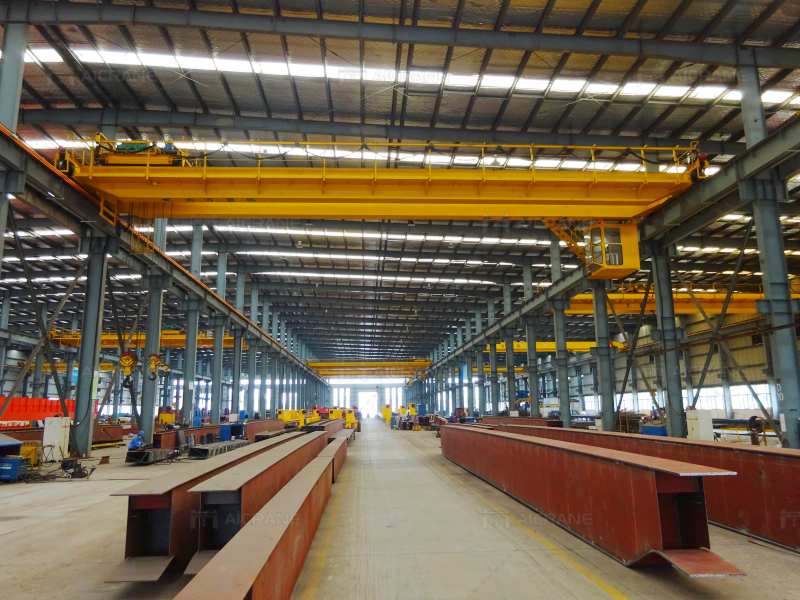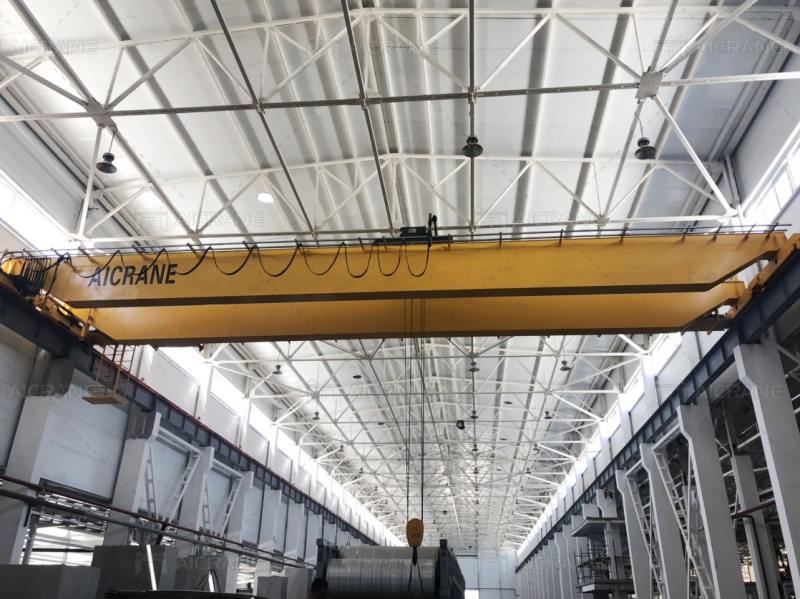When purchasing an overhead crane, understanding the regional price differences is crucial for making an informed decision. Overhead crane prices can vary widely depending on factors such as location, shipping costs, labor costs, regulatory compliance, and local market dynamics. Whether you’re a construction company looking for a crane in North America, Europe, or Asia, it’s essential to understand how these regional factors influence prices. This article explores the key reasons behind regional price differences and provides insights into what to consider when purchasing an overhead crane.

1. Shipping and Transportation Costs
One of the primary factors that contribute to regional differences for overhead crane prices is the cost of shipping and transportation. Overhead cranes are large, heavy pieces of machinery, which makes transportation costly, particularly if they are being shipped across international borders.
- Domestic vs. International Shipping: In regions where cranes are manufactured locally, the cost of shipping may be significantly lower. For example, in countries like China or the United States, where overhead cranes are produced in large volumes, transportation costs within the region tend to be relatively affordable. However, when purchasing from manufacturers based in distant countries, such as in Europe or Asia, additional costs for international shipping, customs, and duties can add to the price.
- Port Charges and Delivery: Costs can also vary based on the proximity to major ports and the efficiency of local logistics. Countries with advanced infrastructure, such as the United States or Germany, may have lower costs due to their efficient transportation systems. In contrast, regions with less developed transportation infrastructure might see higher delivery costs, which would influence crane prices.
2. Labor and Manufacturing Costs
Labor costs are another significant factor that impacts the price of overhead cranes in different regions. The wages paid to workers involved in crane manufacturing can vary substantially between countries, influencing overall production costs.
- High-Cost Countries: In regions like Western Europe, North America, and Japan, labor costs tend to be higher, which can drive up the price of overhead cranes. The higher wages paid to workers in these regions mean that manufacturers must charge more to cover their operating expenses.
- Low-Cost Countries: In countries with lower labor costs, such as China, India, and certain Eastern European countries, manufacturers can produce cranes at a lower cost. This often translates into more affordable overhead crane prices, which can be appealing to businesses looking for budget-friendly options.
However, while low-cost regions can offer cheaper cranes, it’s essential to balance this with quality, as low labor costs may sometimes result in a reduction in manufacturing quality, depending on the manufacturer. If you are looking for a reliable manufacturer for a suitable crane solution, you are advised to check and contact Aicrane Group to get more details.

3. Regulatory and Compliance Costs
Regulatory requirements and industry standards play a critical role in determining the cost of overhead cranes in different regions. Each country or region has its own set of safety, environmental, and quality regulations that manufacturers must adhere to, and compliance with these standards can increase costs.
- Strict Regulations in Developed Markets: Countries like the United States, Canada, and Western European nations often have stringent safety and environmental regulations. Overhead cranes sold in these regions need to comply with certifications such as OSHA (Occupational Safety and Health Administration) in the U.S. or CE (Conformité Européene) marking in the European Union. These compliance requirements may involve higher production costs, testing, and inspection fees, which increase the overall price of the crane.
- Less Stringent Regulations in Developing Countries: In regions with fewer regulations, such as parts of Southeast Asia or Africa, manufacturers may not need to meet as many stringent requirements, resulting in lower production costs and, in turn, lower prices. However, this may come at the cost of reduced safety features or quality standards.
It’s important to ensure that any overhead crane meets the necessary safety and operational standards, especially when purchasing from regions with less stringent regulations.
4. Market Demand and Competition
Local demand and competition also play a significant role in determining overhead crane prices. In areas with high demand for cranes, overhead bridge crane manufacturers may be able to charge higher prices due to limited supply, while in areas with abundant suppliers, competitive pricing may keep costs lower.
- High-Demand Markets: In regions experiencing rapid industrialization, such as parts of the Middle East, India, or China, the demand for overhead cranes is high. In these areas, manufacturers may be able to charge more due to increased competition for resources and infrastructure.
- Competitive Markets: In North America and Europe, where the crane market is well-established and highly competitive, manufacturers may be more likely to offer competitive pricing to attract customers. These markets may have a wider selection of manufacturers and overhead crane types, leading to more affordable prices due to increased competition.
In contrast, emerging markets with fewer suppliers may face higher prices due to limited availability and higher demand, which could be exacerbated by logistical challenges.
5. Currency Exchange Rates
Currency exchange rates can also affect the price of overhead cranes, particularly when buying internationally. Fluctuations in the value of currencies between countries can lead to price changes that are out of the control of the buyer or manufacturer.
- Favorable Exchange Rates: A favorable exchange rate can make cranes from foreign manufacturers more affordable. For instance, if the local currency is strong compared to the manufacturer’s currency, the cost of purchasing a crane may decrease when converting the currency.
- Unfavorable Exchange Rates: On the other hand, an unfavorable exchange rate can increase the price of overhead cranes, particularly if the crane is imported from a country with a weaker currency. Companies may need to factor in these fluctuations when planning their crane purchases.
Conclusion
Overhead crane prices can vary significantly depending on the region from which they are sourced. Factors such as shipping and transportation costs, labor and manufacturing costs, regulatory requirements, market demand, and currency exchange rates all contribute to these regional price differences. By understanding these factors, businesses can make more informed decisions about where to purchase their overhead cranes, balancing cost with quality and ensuring they meet the necessary standards and regulations for their specific projects.
